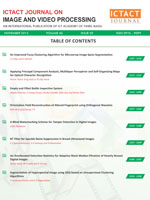An Multi Threshold Model for COVID Patients with Initial Identification of Disease
Subscribe/Renew Journal
Many strains of corona virus such as alpha, beta, gamma, delta, and omicron are still prevalent in various parts of the world. The new type of corona virus is called a variant when it is caused by more than one genetic mutation from the previous type of corona virus. Various strains around the world have come so far. The cough may persist for more than an hour or three or four times in 24 hours and body heat is high. You may not be able to feel the smell or taste. Researchers say that some people may have symptoms similar to those of a severe cold. In this paper, a multi threshold model was proposed to find the initial infection detection of COVID disease. Based on the initial health symptoms these methods observe the inputs of the patients. Then the observed symptoms are compared with the existing database and identify the spreading of the disease. This report was directly monitored by the patient and doctor. This model was helpful to provide the periodical monitoring and perfect treatments to the infected patients.Many strains of corona virus such as alpha, beta, gamma, delta, and omicron are still prevalent in various parts of the world. The new type of corona virus is called a variant when it is caused by more than one genetic mutation from the previous type of corona virus. Various strains around the world have come so far. The cough may persist for more than an hour or three or four times in 24 hours and body heat is high. You may not be able to feel the smell or taste. Researchers say that some people may have symptoms similar to those of a severe cold. In this paper, a multi threshold model was proposed to find the initial infection detection of COVID disease. Based on the initial health symptoms these methods observe the inputs of the patients. Then the observed symptoms are compared with the existing database and identify the spreading of the disease. This report was directly monitored by the patient and doctor. This model was helpful to provide the periodical monitoring and perfect treatments to the infected patients.
Keywords
Alpha, Beta, Gamma, Delta, Omicron, COVID, Threshold Model.
Subscription
Login to verify subscription
User
Font Size
Information



